
ve-header title="19th Century Kent" background=gh:kent-map/images/banners/19c.jpg .sticky
During the 19th century Kent was connected to the metropolis through hoy and steamboats and later by the expanding railway network; it also provided convenient access to the coast of France through the regular passenger ships running from Folkestone and Dover. It attracted the attention of numerous writers across the century (Read More)
People
.cards
Henry Gardiner Adams (1812-1881)
Henry Gardiner Adams

Henry Gardiner Adams appears as a stationer in local directories in 1832. An ambitious, self-made man, his literary work includes The Ocean Queen, and Other Poems (1836) and the 1854 God’s Image in Ebony, an edited anthology.
William Harrison Ainsworth (1805-1882)
William Harrison Ainsworth

Prolific author William (usually known as Harrison) Ainsworth, born on 4 February 1805, wrote for The London Magazine and had plays and poetry published in numerous journals including The Edinburgh Magazine and The European Magazine. His first success, however, came with the 1834 Gothic Romance Rookwood.
Hans Christian Andersen (1805-1875)
Hans Christian Andersen

Andersen had visited Kent before, staying with Dickens’s publisher Richard Bentley in Sevenoaks and visiting Knowle House and Chevening Church, as well as visiting Dickens in Broadstairs in 1847.
Anna Atkins (1799-1871)
Anna Atkins

Anna Atkins, botanist and photographer, was born on 16 March 1799 and became one of the first women photographers and a pioneer of the use of photography in book production. She collected dried plant specimens and became a member of the Botanical Society of London in 1839 - one of its first female members.
Jane Austen (1775-1817)
Jane Austen

One of the greatest English novelists of all time, Jane Austen visited Kent regularly. During or shortly after her visit to Rowling in 1796, Austen began writing ‘First Impressions’, the story which was later published as Pride and Prejudice in 1813.
Alfred Austin (1835-1913)
Alfred Austin

It was not in poetry but in two prose works that Austin made his ‘nearest approach to literature’. One of these works was The Garden That I Love (1894), in which he describes the garden of Swinford Old Manor, near Ashford.
Robert Barr (1849-1912)
Robert Barr

In December 1889 the local journal Folkestone Visitors’ List and Society Journal (based in Tontine Street) reported excitedly that the humourist Robert Barr of the Detroit Free Press had just arrived in London and was planning an extended stay in Folkestone.
R.D. Blackmore (1825-1900)
R.D. Blackmore

Best known for Lorna Doone, novelist R. D. Blackmore (1825-1900) set part of his novel Alice Lorraine (1874–75) in the Weald of Kent.
M. E. Braddon (1835-1915)
M.E. Braddon

Acknowledged in her lifetime as ‘the Queen of the Circulating Libraries’, actress and author Mary Braddon is still best known for her 1862 sensation novel Lady Audley’s Secret and only slightly less so for her unconventional domestic life as the unmarried partner of publisher John Maxwell.
John Brent (1808-1882)
John Brent

Author, poet, campaigner and antiquarian John Brent was born in Rotherhithe in 1808, a political campaigner from a young age, a member of the Anti-Slavery Association, and secretary of the local branch of the Polish Association.
Angela Burdett-Coutts (1814-1906)
Angela Burdett-Coutts
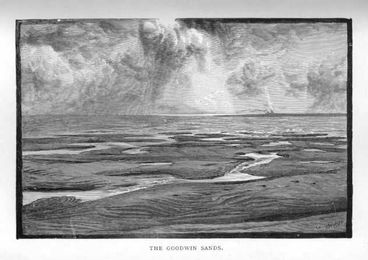
Angela’s accession to the fabulous Coutts fortune, as well as the family name, in 1837 led to her becoming one of the most admired as well as one of the most generous philanthropists of her time.
William Burges (1827-1881)
William Burges

In 1858, William ‘Billy’ Burges, Neo-gothic architect and designer, was commissioned by Alexander Beresford-Hope, the MP for Maidstone to design a missionary monument at St Augustine’s College, Canterbury.
F. C. Burnand (1836-1917)
F.C. Burnand

Sir Francis Cowley Burnand (knighted in 1902) is best known as the editor of Punch from 1880-1906, serialising the Grossmiths’ runaway success Diary of a Nobody in 1888. He was also a member of the ‘Boz Club’ inaugurated after the death of Dickens.
Jane Welsh Carlyle (1801–1866) and Geraldine Jewsbury (1812-1880)
Jane Welsh Carlyle and Geraldine Jewsbury

Jane Carlyle, wife of the Scottish historian, philosopher and essayist, Thomas Carlyle, visited Ramsgate with her dear friend, novelist and book reviewer, Geraldine Jewsbury in August 1861.
Charles Carrick (1823-1890)
Charles Carrick

Charles Carrick, schoolmaster, published his anthology Poems: serious, humorous, and satirical in 1870.
Jessie Challacombe (1864-1925)
Jessie Challacombe
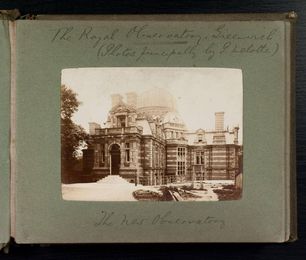
Like her parents, Jessie contributed to the life of the church. She was a member of the church’s young ladies’ working party and in 1890, gave a talk to the parents of the Sunday School scholars on the best way to bring up children, which was later evidenced in her fiction, through her tales of Christian life.
Mary Cowden Clarke (1809-1898)
Mary Cowden Clarke

Mary Cowden Clarke (née Novello) (1809-1898), author, Shakespeare scholar and eldest daughter of musician Vincent Novello and Mary Hehl. Her parents were friends with poets Charles and Mary Lamb, Leigh Hunt, Shelley and John Keats. Mary recalls watching in awe as Keats listened attentively to her father playing the organ.
Wilkie Collins (1824-1889)
Wilkie Collins

Best-selling author, playwright and, according to some, the father of detective fiction, Wilkie [William] Collins frequented the Kent coast regularly on excursions for his health and to visit his close friend, Dickens.
Joseph Conrad (1857-1924)
Joseph Conrad

An extraordinary and significant Polish British literary figure of the late 19th and early 20th century. Despite his lack of enthusiasm for studying, Conrad retained a love of Polish Romantic literature, and acquired French and the classical languages enabling him to engage with both his first career at sea and then his second as a writer.
Catherine Ann Crowe (née Stevens) (1790-1872)
Catherine Ann Crowe
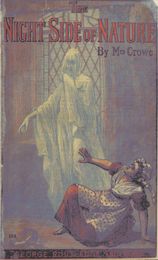
Crowe’s father was a wine merchant and ran a coffee house in London where his customers included Lord Byron. ‘Stevens’s Coffee House’ had a reputation for association with ‘free-traders’ (pirates or smugglers) and this is a theme that runs through many of Crowe’s novels, particularly in relation to Kent.
Richard Dadd (1817-1886)
Richard Dadd

Richard Dadd was one of chemist and druggist Robert Dadd’s seven children and would become one of the most famous inmates of Bethlem Hospital for the insane. His early work was surrealist in style, including his famous paintings of fairies and the supernatural.
Charles Darwin (1809-1882)
Charles Darwin

Few people generally think of Charles Darwin as a writer, let alone a prolific and gifted writer based in Kent. They may be aware of his Journal and Remarks (generally known as The Voyage of the Beagle (1839)), in which a youthful Darwin recounted his five years travelling the world.
Charles Dickens (1812-1870)
Charles Dickens

One of the greatest Victorian novelists, Charles Dickens lived in Kent from 1816 to 1822; and again from 1856 to 1870.
Sir Arthur Conan Doyle (1859-1930)
Sir Arthur Conan Doyle

The creator of the world’s most famous detective Sherlock Holmes, no fewer than six of his stories involve Kent railway stations.
William Dyce (1806-1864)
William Dyce

William Dyce was a Scottish painter, who played a part in the formation of public art education in the United Kingdom, and the South Kensington Schools system.
Mary Ann/ Marian Evans [pseud. George Eliot] (1819–1880)
George Eliot

Marian Evans, later known as the novelist, George Eliot, visited Broadstairs in the summer of 1852. According to Hughes it was unusual for a single woman to holiday alone and so the Chapmans, with whom Evans lodged in London, escorted her to the coast, thus giving an air of respectability about her stay
Sir John Franklin (1786–1847)
Sir John Franklin

On Monday [19 May 1845] H. M. sloops “Erebus” and “Terror” left Greenhithe, on their attempt “to penetrate the icy fastnesses of the north, and to circumnavigate America. Franklin’s reputation had suffered and he hoped to redeem it by discovering the North-West Passage.
Thomas Frost (1821-1908)
Thomas Frost

The chartist, journalist and radical writer Thomas Frost was born in Croydon on 16 December 1821. His father (a tailor by profession) was involved with the Reform Bill agitation.
Elizabeth Gould (1804-1841)
Elizabeth Gould

Elizabeth illustrated scientifically accurate images of novelty bird specimens her husband, prepared for his customers. After two years of hard work, her lavishly crafted plates were published in “A Century of Birds from the Himalaya Mountains” (1830-1832) accompanied by N. A. Vigors’ factful scientific explanations.
Sarah Grand (1854-1943)
Sarah Grand

Sarah Grand (Frances Elizabeth Bellenden Clarke), feminist campaigner and proponent of sex education for girls, became President of the local branches of the National Council of Women and the National Union of Women’s Suffrage Societies and was involved with the Women’s Volunteer Reserve Force during WW1.
George Grossmith (1847-1912)
George Grossmith

George Grossmith was an actor and theatrical manager, producer and director. But his lasting contribution to literature is the comic Diary of a Nobody, written with his brother Weedon Grossmith.
George Alfred Henty (1832-1902)
George Alfred Henty

George Alfred Henty who wrote as G A Henty was a Crimean War correspondent as well as a prolific author. In his day his books sold millions of copies. He wrote more than 100, and most, though not all, of his writing is for boys.
Georgina Hogarth and Ellen Ternan
Georgina Hogarth and Ellen Ternan

In 1876, six years after Dickens’s death, Ellen Ternan married George Wharton Robinson, a clergyman. The Robinsons decide to invest their money into Margate High School. It was there, in Wharton House, that Georgina Hogarth, sometimes accompanied by Dickens’s eldest daughter, Mamie, came to stay.
Hugh Price Hughes (1847 – 1902)
Hugh Price Hughes

Reverend Hugh Price Hughes, Wesleyan minister and religious reformer, was appointed to the Dover Methodist circuit in 1869. Aged twenty-two and fresh from Richmond Theological College, the ‘pale bespectacled’ young man was to become a key figure in the Dover temperance movement.
Anna Maria Hussey, née Reed (1805–1853)
Anna Maria Hussey

Writer, mycologist and botanical illustrator Anna Maria Hussey, née Reed was born in Leckhampstead, Buckinghamshire. In 1831, she married Rev. Dr Thomas John Hussey, rector of Hayes, Kent.
Henry James (1843-1916)
Henry James

At the end of 1892 as a challenge to the stereotyping of American incomers as unable to understand English heritage except in terms of plunder and profit, James made an American rather than an English character into a paradoxical embodiment of the values “of attachment to the past, of romance, of history, continuity and conservatism”.
Edith Katherine Spicer Jay (1847-1901)
Edith Katherine Spicer Jay

Edith Katherine Spicer Jay, a writer of popular military tales, lived in Sandgate during the last ten years of her life. Miss Jay, who wrote under the pseudonym E. Livingston Prescott was the daughter of a Scottish barrister and often depicted stories of military heroism and barrack-room life.
Jerome K. Jerome (1859-1927)
Jerome K. Jerome

Watching Folkestone from a steamer in the summer of 1891, the writer Robert Barr quotes Jerome as saying, ‘I like a place where you don’t need to wear a collar and where you can “mooch” around.’
Douglas William Jerrold (1803-1857)
Douglas William Jerrold

Dramatist and writer. By 1813, profits in the theatre were down, so Jerrold aged 10 left school and went to sea, serving on the gunship Namur. His captain was Jane Austen’s brother. His later work as a printer, and then compositor, exposed him to the world of literature and he began writing plays and periodical articles.
Dora Jordan (1761-1816)
Dora Jordan

Mrs Dora Jordan was the foremost actress of her day and very much admired. She became the long-standing mistress of the Duke of Clarence, the future King William IV, with whom she lived for many years and had ten children.
John Keats (1795-1821)
John Keats

The Romantic poet John Keats, whose short but remarkable career and early death from tuberculosis at the age of twenty-five have made him one of the most known and best loved poets of all time, holidayed in Margate on two occasions.
Eliza Lynn Linton (1822-1898)
Eliza Lynn Linton

Gad’s Hill Place in Higham is well-known for being the country home of Charles Dickens, but this is not its only literary connection. It had previously belonged to the family of Eliza Lynn Linton; one of the most prolific writers of her time, who is known for being the first female salaried journalist in Britain.
John Edensor Littlewood (1885-1977)
John Edensor Littlewood

In 1912, Littlewood published the first of a series of papers with G.H. Hardy, a collaboration which was to last 35 years. The two mathematicians published articles on Diophantine analysis, divergent series summation, Fourier series, the Riemann zeta function and the distribution of primes.
Bessie Marchant (1862-1941)
Bessie Marchant

Bessie Marchant (Bessie Marchant Comfort, Mrs J. A. Comfort, pesud. John Comfort) was an author and set a number of her earlier novels in the place of her childhood – Kent.
George Meredith (1828-1909)
George Meredith

In a letter dated October 1884, the poet and novelist George Meredith tells Robert Louis Stevenson of his plan to visit Ramsgate, ‘whither I go for bracing air, for half a week’.
Alfred Moberly (1835-1912)
Alfred Moberly

Alfred Moberly, army major and author of the sensation novel Lady Valeria, was born in Clapham in 1835. Alfred joined the Royal Scots regiment and saw action in the Baltic in 1854. Five years later, he was appointed Instructor of Musketry at Hythe, a position he was to hold for eighteen years.
F. F. Montrésor (1862-1934)
F.F. Montrésor

Romance novelist Frances Frederica (Freda) Montrésor was born at Walmer as the fourth daughter of Commodore Frederick Byng Montrésor and Emily Maria Montrésor.Freda’s first novel Into the Highways and Hedges was published in February 1895
Augustus Welby Pugin (1812 –1852)
August Welby Pugin

Augustus Welby Pugin, the charismatic leader and promoter of the Gothic Revival, best known to the public for his work on the interiors of the new Palace of Westminster, was one of the most important architects of the nineteenth century.
Joseph Pyke (1824-1902)
Joseph Pyke

he Mechanics Institute in Chatham was established in the early 1850s, and furnished aspiring tradesmen with a possibility of social advancement through its lectures. The foundation and the initial maintenance of the institute were secured by Joseph Pyke, then in his twenties, and a member of the Chatham Jewish community.
G. W. M. Reynolds (1814 – 1879)
G.W.M. Reynolds

Reynolds’s novel Mary Price (1851–53) is a tale of two cities which takes its heroine to Paris and London. As Reynolds resets the novel’s timeframe to the years between 1826 (when the heroine is eleven) and 1835 (when she is a new bride), so he shifts its geographical centre to the area between Ashford and Deal.
Dante Gabriel Rossetti (1828-1882) and Christina Rossetti (1830-1894)
Dante Gabriel Rossetti and Christina Rossetti

D. G. Rossetti was a prolific English poet, painter, and illustrator of the Pre-Raphaelite movement. He was one of the founders of the Pre-Raphaelite Brotherhood in 1848. His sister Christina was a poet associated with the Pre-Raphaelite literary movement. Her most famous collection was Goblin Market and Other Poems (1862).
Henry Russell (1812-1900)
Henry Russell

Composer and musician, Henry Russell was born in Sheerness on the Isle of Sheppey and composed between 600-800 songs, many tackling social injustice including slavery.
George Augustus Sala (1828 –1895)
George Augustus Sala

Author and journalist, George Augustus Sala was born in London in 1828, the son of Henrietta Simon Sala, a concert singer and woman of colour. After the death of his legal father in 1829, his mother taught singing to help support her family of five children.
Edward Linley Sambourne (1844-1910)
Edward Linley Sambourne

Edward Linley Sambourne, cartoonist, began his career as a marine draughtsman at Messrs Penn and Sons of Greenwich. In 1867 he sent a few of his drawings to Mark Lemon, the editor of Punch who encouraged him to take art lessons; he joined the magazine in 1871.
Mary Wollstonecraft Shelley (1797-1851)
Mary Wollestonecraft Shelley

In 1832, in order to escape the cholera epidemic in London, the English novelist Mary Shelley moved to the small coastal town of Sandgate situated between Hythe and Folkestone.
Margaret Emily Shore (1819-1839)
Margaret Emily Shore

Emily Shore was an observant and precocious diarist. She was born and brought up in Suffolk, but in 1831, as she explains in a preface to her journal from this year,’papa and mamma determined to take us to Broadstairs, to spend the summer holidays by the seaside.’
Lady Hester Stanhope (1776-1839)
Lady Hester Stanhope

Lady Hester Stanhope is probably best known today as ‘Queen of the Desert’ or ‘Queen of the East’ from her near-legendary life travelling in the Ottoman Empire before settling in present-day Lebanon, but much of her early life was spent in Kent.
Henrietta Vaughan Stannard [Pseud. John Strange Winter] (1856–1911)
Henrietta Vaughan Stannard

Stannard (née Palmer) John Strange Winter [pseud.], was a popular novelist who wrote approximately 112 books and contributed 42 short stories to the Family Herald under the pseudonym of ‘Violet Whyte’.
Charlotte Brown Carmichael Stopes (1840-1929)
Charlotte Carmichael Stopes

Frustrated by the exclusion of women from universities, Charlotte Carmichael joined the Ladies’ Edinburgh Debating Society in 1866 and submitted poems and articles. When university classes were offered to women in 1874, Charlotte began to attend lectures and became the first woman to gain a Certificate in Arts from the University of Edinburgh.
Francis Storr the Elder (1808-1888) and Younger (1839-1919)
Francis Storr the Elder

Revd Francis Storr (1808-1888) senior was vicar of All Saints’ church Brenchley in Kent. Francis Storr (1839-1919) junior was an author, biographer and translator. Together father and son wrote anthologies of poetry.
Netta Syrett (1865-1943)
Netta Syrett

Writer and playwright Netta [Janet] Syrett was born at 23, Harbour Street, Ramsgate in 1865 and was best known for Portrait of a Rebel (1929), which was made into the 1936 Katherine Hepburn film A Woman Rebels.
Archibald Campbell Tait (1811 –1882)
Archibald Campbell Tait

In March 1848, Archibald Campbell Tait, the headmaster of Rugby School, visited Broadstairs on the advice of his doctor.
Ellen Ternan (1839-1914)
Ellen Ternan

Ellen Lawless Ternan was an English actress often associated with the author Charles Dickens.
William Makepeace Thackeray (1811-1863)
William Makepeace Thackeray

Educated at Charterhouse and Cambridge, W. M. Thackeray is remembered by many as the author of Vanity Fair (1847) and by some for suggesting that it takes three generations to make a gentleman.
Queen Victoria (1819-1901)
Queen Victoria

As a young Princess, Victoria enjoyed several holidays in Ramsgate, first visiting the town in 1823 at the age of four. She particularly enjoyed walks along the pier and watching the ships in the harbour.
Louis Wain (1860-1939)
Louis Wain

Louis Wain, illustrator of cats, lived for many years in Westgate on Sea. He was born in Clerkenwell in London on 5 August 1860, and by his own account, had a strange childhood.
Ann Walker (1803-1854)
Ann Walker

On 12 June 18341, Ann Walker and Anne Lister arrived in Canterbury late at night, in their carriage, with two of their servants. Ann notes in her diary how they missed out on seeing Rochester Cathedral on the way due to rain.
Sir Hugh Seymour Walpole (1884 - 1941)
Sir Hugh Seymour Walpole

Travelling through Kent brought him time to read, where, in an additional trip ‘frozen in the train down to Canterbury reading Our Mutual Friend’ (Diaries, 178), Walpole discusses Dicken’s ‘determined turn towards modernism’ - clearly his time in Kent brought him not just writing inspiration, but ample time to read.
Florence Warden (1857–1929)
Florence Warden
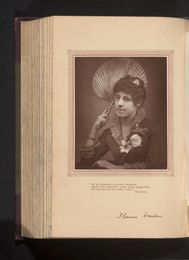
Florence Warden was an actor and writer. She lived at St Mildred’s Road, Ramsgate and later Beach House, Sandgate during the late nineteenth century. She and her sister obtained positions as governesses, and in her spare time, Florence began writing short stories and novelettes.
Gertrude Warden (1859-1925)
Gertrude Warden
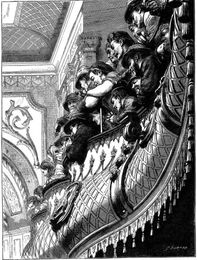
Forced to leave her finishing school in Brighton, with her sister, Gertrude sought to make her way in the world working as a governess for two years before taking to the stage.
P.G. Wodehouse (1881-1975)
P.G. Wodehouse

P. G. Wodehouse only spent two years at Malvern House Prep School in the Kearsney area of Dover, between 1892 and 1894, and it may indeed have been ‘a very bad choice for a dreamy impractical boy who loved reading.’
Israel Zangwill (1864-1926)
Israel Zangwill

The Jewish author Israel Zangwill’s first recorded encounter with Kent dates to a holiday in Thanet in 1881 when he was sixteen. The future author of Children of the Ghetto ‘was wandering about the Ramsgate sands’ when he spotted a writing competition, advertised in an abandoned issue of Society magazine.
Places
.cards
Broadstairs
Broadstairs

Despite being the favoured holiday destination of no less a figure than Charles Dickens, Broadstairs never aimed to compete with either the much-vaunted gentility of Ramsgate or the mass appeal of Margate.
Canterbury
Canterbury

One of the more surprising features of Canterbury is that, despite the cathedral being the home of the Church of England, no Archbishop of Canterbury was enthroned there until John Bird Sumner in 1848.
Chatham Dockyard
Chatham Dockyard

The 19th century saw Chatham Dockyard rise to a pre-eminent position among naval dockyards, with its prime location and key participation in the Industrial Revolution.
Dover
Dover

Like Ramsgate, Dover considered itself to be among the more genteel of the 19th century seaside resorts but it could not avoid rackety associations altogether.
Folkestone
Folkestone

As one 19th century wag observed, Folkestone is a near anagram of ‘Kent Fools’, a joke not lost on the unknown author (believed to be from Dover) of The Folkestone Fiery Serpent.
Folkestone Free Library
Folkestone Free Library

Whilst the Libraries Act of 1850 enabled the provision of public libraries through the rates, provincial towns were unaccountably reluctant, in short - as Mr Micawber might have put it - they were slow to act.
Gravesend
Gravesend

In the nineteenth century, steamboats sailing to Gravesend transferred an influx of tourists to Rosherville Gardens, a Victorian pleasure garden built within an abandoned chalk pit owned by Jeremiah Rosher.
Margate
Margate

The ‘modesty hood’, designed to screen naked bathers as they descended the steps of their horse-powered bathing machines, was invented in Margate in 1753.
Ramsgate
Ramsgate

‘Royal Ramsgate’, so-called because Princess Victoria had spent holidays there in 1835 and 1836, largely succeeded in distancing itself from its more louche counterpart Margate in the popular imagination.
Rosherville
Rosherville

Rosherville Gardens, a long-forgotten pleasure garden built in an abandoned chalk pit in Kent in 1830, was a popular tourist attraction in the nineteenth century.
Sandgate
Sandgate

Sandgate, a coastal village near the outskirts of Folkestone, has been hailed as the ‘author’s haven of repose’ and can claim association with several well-known authors.
Seaside Resorts
Seaside resorts

As the fashionable ‘water cure’ of spas such as Bath and Tunbridge Wells moved coastwards in the late eighteenth and nineteenth centuries, so a number of obscure fishing villages reinvented themselves as seaside resorts.
Events
.cards
Contagious Diseases Acts
Contagious Diseases Acts

Parliament passed the Contagious Diseases Act in 1864 (amended in 1866 and 1869). The act was specifically targeted at ports and garrison towns with, unsurprisingly, Chatham qualifying as both.
Hoodening
Hoodening

Traditionally, hoodening has taken place mainly around the Thanet, Deal and Canterbury areas. In 1839, a Hooden Horse in Broadstairs so frightened a lady that she collapsed and died.
Jewish Emancipation
Jewish Emancipation

In 1829 the Roman Catholic Relief Act left only Jews excluded from politics by their faith and a campaign for equal rights, which was to last for decades, began.
Leather and Dust
Leather and Dust

David Copperfield’s curated walk can tell us much about the route he follows from London. Maps can show us the route, but what of the road itself?
Texts
.cards
Miss Balmaine’s Past
Miss Balmaine’s Past by Bithia Croker

‘Horton’ a thinly veiled New Romney is the setting for Bithia Mary Croker’s 1898 novel Miss Balmaine’s Past. The novel paints a dismal portrait of Horton: “no shopping, no lending library – not even a clothing club.”